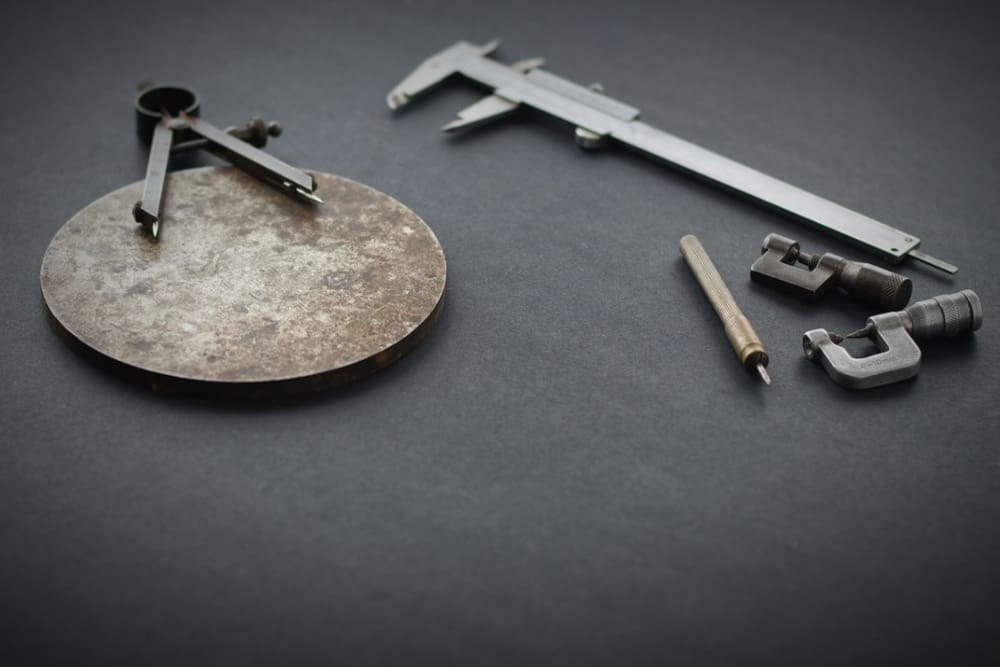Mobile measuring devices vs traditional tools
Handheld measuring instruments have long been popular among machine tool operators, quality controllers and engineers. These instruments have been in use for several hundred years, well known to users for a long time have provided reliable measurement results. However, the use of these devices comes with some pitfalls.
SUGGESTIONS
This is now one of the most widely used handheld instruments – they are characterized by a measurement error resulting from a phenomenon called the Abbé principle. According to this principle, if the object being measured is not perfectly parallel to the axis of the caliper being used, an angle is formed that is a source of error
measurement. However, it is possible to calculate the approximate value of this error.
Another important issue concerning calipers relates to the accumulation of errors associated with their technical parameters. To successfully pass calibration, a dial caliper with a resolution of 0.025 mm must provide an accuracy of 0.025 mm for length measurements and have a parallelism error of
not exceeding 0.025 mm. However, the measurement of a large part may be subject to both errors. In this case, the possible error value is ±0.050 mm.
MICROMETERS
Due to the inherent problems associated with calipers, micrometers remain a popular alternative. In particular, they avoid the Abbé error, as they allow the screw and vernier of the micrometer to be aligned with the measured length. However, errors also occur in screw micrometers, and they are caused by the drum threads. These errors are greater the greater the length to be measured. The two primary sources of error caused by screw micrometer threads are thread wobble due to rotation, often referred to as “wavy threads,” and circumferential play, which causes inaccurate overlap between the male and female threads. The errors are due to the design of the micrometer, which entails storage and very costly maintenance and calibration of many sets of micrometers of different sizes, as this is the only way to ensure their suitability under different conditions.
Even so, micrometers are not able to measure some sizes well, such as inside diameters. In the case of micrometers, there is also measurement error caused by the user himself. If the clutch is over-tightened, the micrometer itself or the object being measured may be deformed. Over time, both the anvil and spindle can wear out, resulting in a loss of parallelism between them. Both of these factors can have an adverse effect on measurements.
Environmental factors can also affect the accuracy of micrometers. Not only do temperature fluctuations cause expansion and contraction of the gauge and the object being measured, but repeated cycles of temperature drop and rise can permanently alter the length of a micrometer’s spindle, its anvil and even the physical properties of the thread. This is the result of metal annealing during the manufacturing process.
PORTABLE COORDINATE MEASURING DEVICES
Technological developments in the areas of hardware and software have made possible the development of portable coordinate measuring devices, which make it possible to solve some of the problems discussed above with accuracy. Some devices have a measurement uncertainty of just 0.010 mm and a repeatability of 0.01 mm as well. Some of the equipment weighs as little as 10 kilograms or less and can be moved freely around the site. Using a hard touch probe with a precisely known diameter, points are recorded by touching the surface of the part being measured. Since the exact diameter of the spherical tip of the probe is known, the software takes this diameter into account and records the position of the measuring point. In this way, points are recorded until enough data is collected from which the operator is able to determine lengths, diameters, angles and other geometric properties in the software.
The software also allows the calculation of dimensions based on measured and calculated elements. Some software packages include geometric dimensioning and tolerancing (GD&T) functions that can reduce part inspection time by up to 80%. Other programs allow importing CAD models and inspecting parts against them (checking curved surfaces). The software allows you to create reports and control cards which are confirmation of the quality of the manufactured item.
SUMMARY
For more than a century, hand-held instruments have enabled machine operators and manufacturers to measure quickly and reliably. However, as the complexity of parts and whole products increases, CMMs are rising to the challenge to realize the most difficult measurements under extremely demanding conditions.
In extreme conditions, where with great precision, we need to measure large objects, complex dimensioning) the devices provide greater accuracy and easier reporting and presentation of results, in addition to reducing repetitive results, and allow to measure geometries impossible to capture with hand tools.


